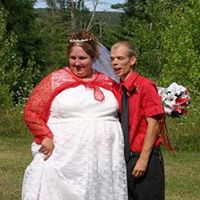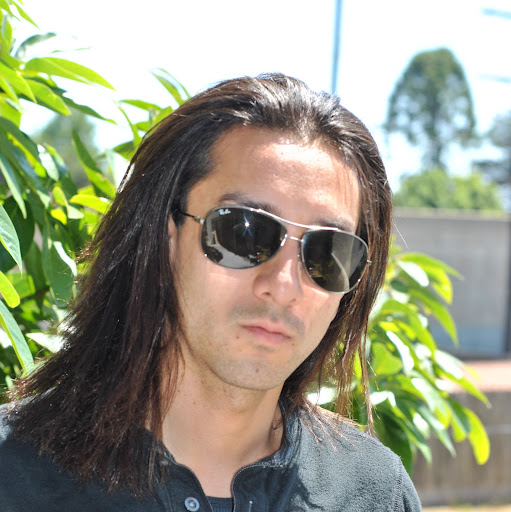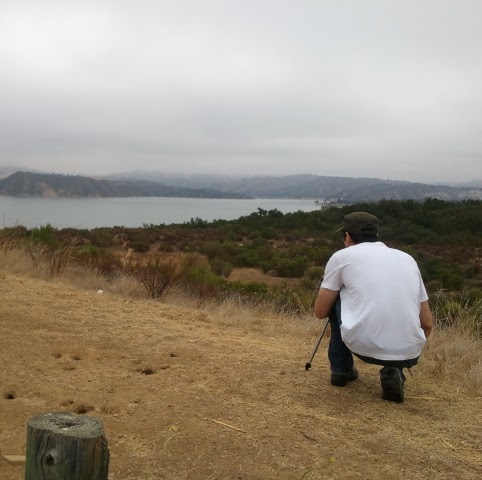Albert Andy Andrews
age ~53
from Birmingham, AL
- Also known as:
-
- Albert A Andrews
- Albert Etal Andrews
- Andy A Andrews
- Robert A Andrews
- Albert A Andrew
- Alberta Andrews
- Albertandy Andrews
- Al Andrews
- Roberta Andrews
Albert Andrews Phones & Addresses
- Birmingham, AL
- Trussville, AL
- Charlotte, NC
- Ooltewah, TN
- Apison, TN
- West Chester, OH
- Cleveland, TN
- La Follette, TN
- Chattanooga, TN
Isbn (Books And Publications)
-
Microscopic And Endoscopic Surgery With The Cob2S Laser
view source -
Author:Albert Henry Andrews
-
ISBN #:0723670099
Resumes

Albert Andrews
view source
Albert Andrews
view source
Albert Andrews
view source
Albert Andrews
view source
Albert J Andrews
view source
Albert Andrews
view source
Albert Andrews
view sourceUs Patents
-
Archery Bow Limb Mounting Assembly
view source -
US Patent:6360734, Mar 26, 2002
-
Filed:Jun 6, 2000
-
Appl. No.:09/587824
-
Inventors:Albert A. Andrews - Cleveland TN
-
Assignee:High Country Archery, Inc. - Dunlap TN
-
International Classification:F41B 500
-
US Classification:124 231, 124 256
-
Abstract:A connector for adjustably mounting a limb of a compound archery bow to a riser of the bow has a connector, a first washer with a sliding surface and a guide surface complementary to and received against the sliding surface and permitting the first washer to pivot in substantially any direction relative to the connector. In assembly, a threaded shank of the connector is received in a threaded blind bore in the riser and a head of the connector traps the first washer against the limb. The connector may be loosened or backed out of the riser to permit adjustment of the orientation of the limb relative to t he riser to thereby adjust the draw weight of the bow. As the orientation of the limb is changed, the orientation of the first washer relative to the connector is likewise changed without changing the orientation of the connector to limit the bending or lateral forces applied to the connector and prevent it from being sheared or otherwise failing. Preferably, an insert which defines the guide surface is disposed within a recessed sliding surface of the washer between the washer and the head of the connector and is complementarily shaped to the recess to permit angular or pivotal movement of the first washer relative to the connector in substantially any direction.
-
Archery Bow Vibration Dampening System
view source -
US Patent:6543432, Apr 8, 2003
-
Filed:Dec 21, 2000
-
Appl. No.:09/746483
-
Inventors:Albert A. Andrews - Cleveland TN
Spencer D. Land - Dunlap TN -
Assignee:Spenco - Dunlap TN
-
International Classification:F41B 500
-
US Classification:124 231, 124 256
-
Abstract:An archery bow has at least one dampener to reduce noise and vibration of the bow in use. Desirably, at least one dampener, and preferably a plurality of individual dampeners may be disposed in the area of the connection of a limb to a riser or handle portion of the bow to reduce vibrations transferred to the riser by the limb. Additionally, the archery bow preferably has a cam adapted to receive a dampener to reduce the noise and vibration passing between the cam and the limb. Any number of dampeners may be used in combination, or the dampeners may be used separately as desired.
-
Compound Bow Having A Limited Freedom Of Movement Between Cojournaled Cams
view source -
US Patent:6629522, Oct 7, 2003
-
Filed:May 9, 2001
-
Appl. No.:09/851629
-
Inventors:Albert A. Andrews - Cleveland TN
-
Assignee:Spenco, Inc. - Dunlap TN
-
International Classification:F41B 510
-
US Classification:124 256, 124900
-
Abstract:A compound archery bow comprising a body having first and second flexible ends. A bowstring has at least a portion of itself trained about a rotational assembly and is anchored to a cam assembly. In addition, an anchor cable has a first cable end fixed to the first end of the bow and a second cable end secured to the cam assembly. The cam assembly has a bowstring anchor projection and an anchor cable anchor projection for anchoring the bowstring and the anchor cable, respectively and an anchor cable track for taking in the anchor cable as the bow is being drawn. The cam assembly also has a bowstring track for letting out bowstring cable as the bow is being drawn and a mechanical linkage permitting limited relative motion between the bowstring cable track and the anchor cable track.
-
Composite Riser
view source -
US Patent:6669802, Dec 30, 2003
-
Filed:Dec 21, 2000
-
Appl. No.:09/745661
-
Inventors:Albert A. Andrews - Cleveland TN
Spencer Land - Henderson NV -
Assignee:Spenco - Dunlap TN
-
International Classification:B32B 3100
-
US Classification:156245, 156 93, 264257, 264258, 264324
-
Abstract:A composite riser for an archery bow formed from fibers embedded in resin in such a way that resin rich areas, dry fibers and voids are eliminated, providing consistent risers of high quality. The location of structural fibers, such as a carbon fibers or fiberglass composite materials, is ensured within a mold used to form the riser and relative to the resin which bonds the fibers together. Various processes may be used to form the riser with control of the fibers and resin maintained. For example, structural reaction injection molding, liquid composite molding, continuous fiber molding, modified compression molding, resin transfer molding and variable infusion molding processes can be used.
-
Archery Bow Assembly
view source -
US Patent:6712057, Mar 30, 2004
-
Filed:Sep 27, 2002
-
Appl. No.:10/256623
-
Inventors:Albert A. Andrews - Cleveland TN 37312
-
International Classification:F41B 500
-
US Classification:124 231
-
Abstract:An archery bow comprising a riser extending between opposing first and second ends. A limb is coupled to each end of the riser. Each limb has a first end for connecting to the riser and a second distal end. A pocket axle pivotally connects the first ends of each limb to one end of the riser. A strut assembly is operatively coupled between each of the limbs and the riser adjacent the pocket axle for selectively pivoting the limbs relative to the riser thereby allowing manual assembly and tuning of the bow by varying the distance between the distal ends of the limbs.
-
Bow Actuating System
view source -
US Patent:6786214, Sep 7, 2004
-
Filed:Nov 13, 2003
-
Appl. No.:10/712193
-
Inventors:Albert A. Andrews - Cleveland TN 37312
-
International Classification:F41B 500
-
US Classification:124 231, 124 256
-
Abstract:An archery bow comprising a riser extending between opposing first and second ends, with a limb coupled to each end. Each limb has a first end for connecting to the riser and a second distal end. An axle pivotally connects at least one of the limbs to one end of the riser. An actuator operatively couples between at least one of the limbs and the riser adjacent the axle for supporting the limbs about the riser. The actuator includes a resilient member for storing energy as the bow is drawn, and releasing energy as the bow is released. The resilient member pivotally attaches to the riser and the limb, elongating or compressing to dynamically change the angle between the riser and the limb while the bow is in use. After the shot, the resilient member acts as a shock absorber to damp the vibration of the bow.
-
Bow Suspension System
view source -
US Patent:6964271, Nov 15, 2005
-
Filed:Feb 10, 2003
-
Appl. No.:10/361333
-
Inventors:Albert A. Andrews - Cleveland TN, US
-
International Classification:F41B007/00
-
US Classification:124 256, 124 89, 267153
-
Abstract:A suspension system is provided for dampening vibrational energy and noise in an archery bow. The suspension system includes a limb including an axle clearance hole extending axially therethrough, an axle shaft extending through the axle clearance hole, and a bushing seated within the axle clearance hole for rotatably receiving the axle shaft therethrough. In addition, the suspension system includes a dampening member positioned and extending radially between the bushing and the limb for decoupling the axle shaft from the limb and dampening vibrational energy exerted through the axle shaft.
-
Method Of Making A Composite Riser
view source -
US Patent:7273575, Sep 25, 2007
-
Filed:Dec 1, 2003
-
Appl. No.:10/724919
-
Inventors:Albert A Andrews - Cleveland TN, US
Spencer Land - Henderson NV, US -
Assignee:Spenco - Dunlap TN
-
International Classification:F41B 5/00
F41B 5/14
B29C 70/10 -
US Classification:264257, 264258, 264324, 2643282, 124 231
-
Abstract:A composite riser for an archery bow formed from fibers embedded in resin in such a way that resin rich areas, dry fibers and voids are eliminated, providing consistent risers of high quality. The location of structural fibers, such as a carbon fibers or fiberglass composite materials, is ensured within a mold used to form the riser and relative to the resin which bonds the fibers together. Various processes may be used to form the riser with control of the fibers and resin maintained. For example, structural reaction injection molding, liquid composite molding, continuous fiber molding, modified compression molding, resin transfer molding and variable infusion molding processes can be used.
Name / Title
Company / Classification
Phones & Addresses
Principal
Albert Andrews Trucking LLC
Local Trucking Operator
Local Trucking Operator
5141 Avening Ct, Charlotte, NC 28215
Youtube
Classmates

Albert Andrews
view sourceSchools:
Jackson High School Jackson AL 1978-1982
Community:
Herman Leggett

Albert Andrews
view sourceSchools:
Dracut High School Dracut MA 1957-1961

Albert Andrews
view sourceSchools:
Saint John of the Cross School Roslyn PA 1976-1984
Community:
Theresa Brown, Judy Fletcher, Patricia O'sullivan

Albert Andrews
view sourceSchools:
Hotchkiss School Lakeville CT 1954-1958
Community:
Hortence Culpepper, Jim Ryan, Michael Malin

Albert Andrews
view sourceSchools:
Holy Trinity High School Hicksville NY 1966-1970
Community:
Regina Molnar, David Caruso, Lyn Swierski, Brenda Levine, Jean Ottoson

Albert Andrews (Andy)
view sourceSchools:
Port Byron High School Port Byron NY 1975-1979
Community:
Glenn Gourley, Darlene Dickinson, Wendy Smith, Kathyann Ferguson, Patricia Walter, Bonnie Donalds, Thomas Clark, April Knapp, Carol Balash

Albert Andrews | T. W. Jo...
view source
Albert Andrews, Thurmond ...
view source
Albert Andrews
view source
Albert Andrews
view source
Albert Andrews
view source
Albert Andrews
view source
Albert Andrews
view source
Albert Andrews
view source
Albert Andrews
view source
Albert Andrews Gord
view sourceGoogleplus

Albert Andrews

Albert Andrews

Albert Andrews

Albert Andrews

Albert Andrews

Albert Andrews

Albert Andrews

Albert Andrews
Get Report for Albert Andy Andrews from Birmingham, AL, age ~53





